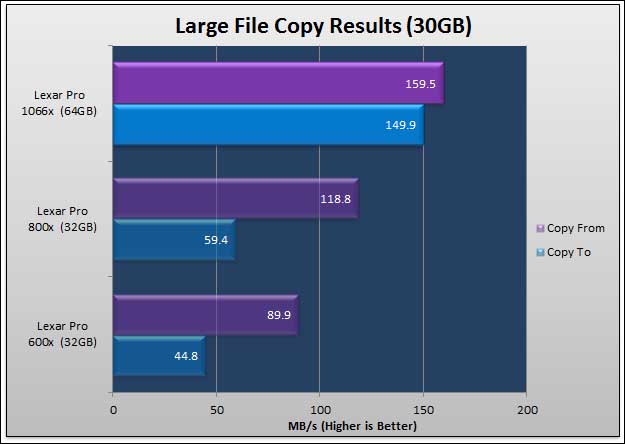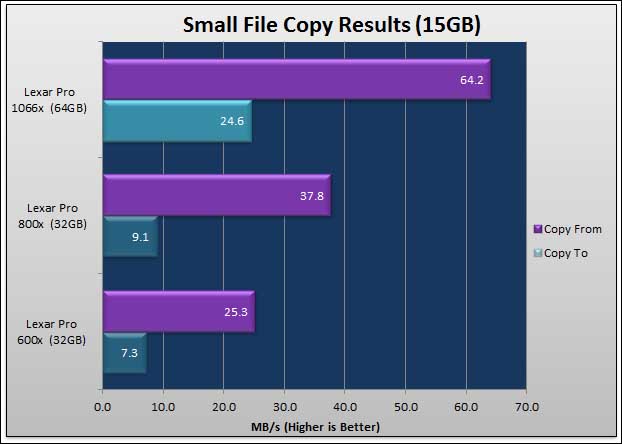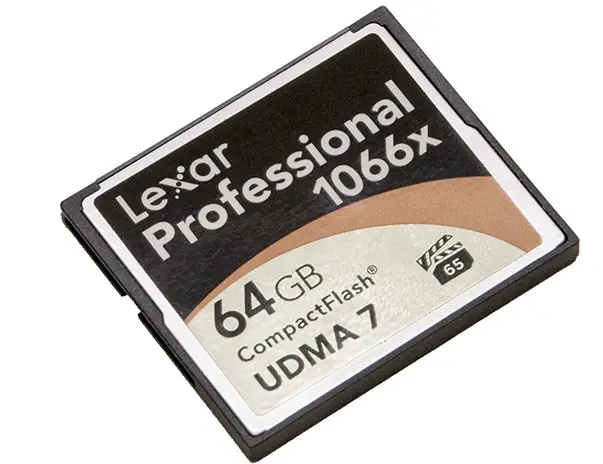Many novices do not understand the importance of write performance and how great an impact it can have on real world performance. To show exactly what this new series can do we have also created a test that will do precisely that.
To this end we have taken our D300s and set the ISO 200, the shutter speed to 1/250th of a second and a f-stop of f3.5. All on a tripod aimed at the exact same image. This resulted in 12-bit (lossy compressed) RAW files of about 13MB. Since we are using the add-on grip and battery pack accessory, this allowed our D300s to have a sustained burst rate of 8 frames per second. We simply held down the button and timed how long our ’17 frame’ buffer lasted before the first slow down. This test was done 4 times per card and the averages for each are listed below.


To be candid we are surprised with how much better the new 1066X series is than the 800X series. As you can see performance does matter and has a drastic impact on overall camera performance. Remember even if you are not constantly burst shooting a sporting event, the faster the camera can write to the card the faster your images are taken out of volatile RAM and stored on longer term NAND.
More to the point the 1066X has breathed new life into our older camera and certainly will allow us the luxury of putting off upgrading our camera body until the D5 (or Canon 1Dx replacement) arrives later this year. Obviously our old camera is not able to fully take advantage of UDMA 7 speeds – as it would have resulted in an ‘infinity’ camera buffer with the card easily handling the 100MB/s demands placed upon it; but the combination of much faster NAND and more powerful controller housed inside the 1066X card does make for a rather potent combination…even in older cameras. If your new camera spits out 25-50MB file sizes and you want to drastically improve your buffer size, this is the series you want to own. If your camera only spits out 10MB file sizes, this too is the card series you want. There really is no down side to opting for it.











